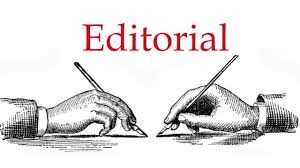
After a four-year hiatus, the historic Darbar Move has finally returned to Jammu, reviving not just an administrative tradition but also a deep emotional and cultural connection that binds the two capitals of the Union Territory. The people of Jammu have responded with jubilation, lining the streets to welcome officials, traders decorating markets, and civil society groups expressing gratitude for what they see as a restoration of balance and inclusion in governance. The Darbar Move, a 149-year-old practice initiated by Maharaja Ranbir Singh in 1872, was conceived to ensure accessibility and equal representation for both regions—Kashmir and Jammu. Though criticized in recent years for being logistically demanding and financially burdensome, its essence lies beyond administrative convenience. It represents a symbolic and practical bridge between the Valley and the plains—a reminder that Jammu and Kashmir’s governance, culture, and aspirations are shared. When the practice was halted in 2021 as part of administrative restructuring, many in Jammu felt alienated. The absence of half-yearly government functioning created not only an economic void for local businesses but also an emotional one, as the city lost its seasonal vibrancy that once infused life into its streets, hotels, and markets. The revival of the move has therefore been met with heartfelt enthusiasm, reflecting the people’s longing for visibility and engagement in the UT’s administrative processes. However, the return of the Darbar Move must also prompt reflection. It should not merely be a ceremonial relocation of offices but a meaningful exercise in bringing governance closer to the people. Modern technology, e-governance, and digital file movement can certainly ease administrative transitions—but they cannot replace the human connection and regional balance the move embodies. The challenge before the government now is to preserve this tradition while making it more efficient, cost-effective, and relevant in the digital era. For Jammu, the return of the Move has rekindled civic pride and economic activity. For Kashmir, it signals continuity and inclusiveness. Most importantly, for the Union Territory as a whole, it reinforces the idea that governance must reflect unity, not division. As the Secretariat settles once again in Jammu, the echoes of welcome from its people carry a deeper message—traditions that unite regions should be nurtured, not abandoned. The return of the Darbar Move is thus more than a change of venue; it is the restoration of a shared heartbeat between the twin capitals of Jammu and Kashmir.
After a four-year hiatus, the historic Darbar Move has finally returned to Jammu, reviving not just an administrative tradition but also a deep emotional and cultural connection that binds the two capitals of the Union Territory. The people of Jammu have responded with jubilation, lining the streets to welcome officials, traders decorating markets, and civil society groups expressing gratitude for what they see as a restoration of balance and inclusion in governance. The Darbar Move, a 149-year-old practice initiated by Maharaja Ranbir Singh in 1872, was conceived to ensure accessibility and equal representation for both regions—Kashmir and Jammu. Though criticized in recent years for being logistically demanding and financially burdensome, its essence lies beyond administrative convenience. It represents a symbolic and practical bridge between the Valley and the plains—a reminder that Jammu and Kashmir’s governance, culture, and aspirations are shared. When the practice was halted in 2021 as part of administrative restructuring, many in Jammu felt alienated. The absence of half-yearly government functioning created not only an economic void for local businesses but also an emotional one, as the city lost its seasonal vibrancy that once infused life into its streets, hotels, and markets. The revival of the move has therefore been met with heartfelt enthusiasm, reflecting the people’s longing for visibility and engagement in the UT’s administrative processes. However, the return of the Darbar Move must also prompt reflection. It should not merely be a ceremonial relocation of offices but a meaningful exercise in bringing governance closer to the people. Modern technology, e-governance, and digital file movement can certainly ease administrative transitions—but they cannot replace the human connection and regional balance the move embodies. The challenge before the government now is to preserve this tradition while making it more efficient, cost-effective, and relevant in the digital era. For Jammu, the return of the Move has rekindled civic pride and economic activity. For Kashmir, it signals continuity and inclusiveness. Most importantly, for the Union Territory as a whole, it reinforces the idea that governance must reflect unity, not division. As the Secretariat settles once again in Jammu, the echoes of welcome from its people carry a deeper message—traditions that unite regions should be nurtured, not abandoned. The return of the Darbar Move is thus more than a change of venue; it is the restoration of a shared heartbeat between the twin capitals of Jammu and Kashmir.
© Copyright 2023 brighterkashmir.com All Rights Reserved. Quantum Technologies